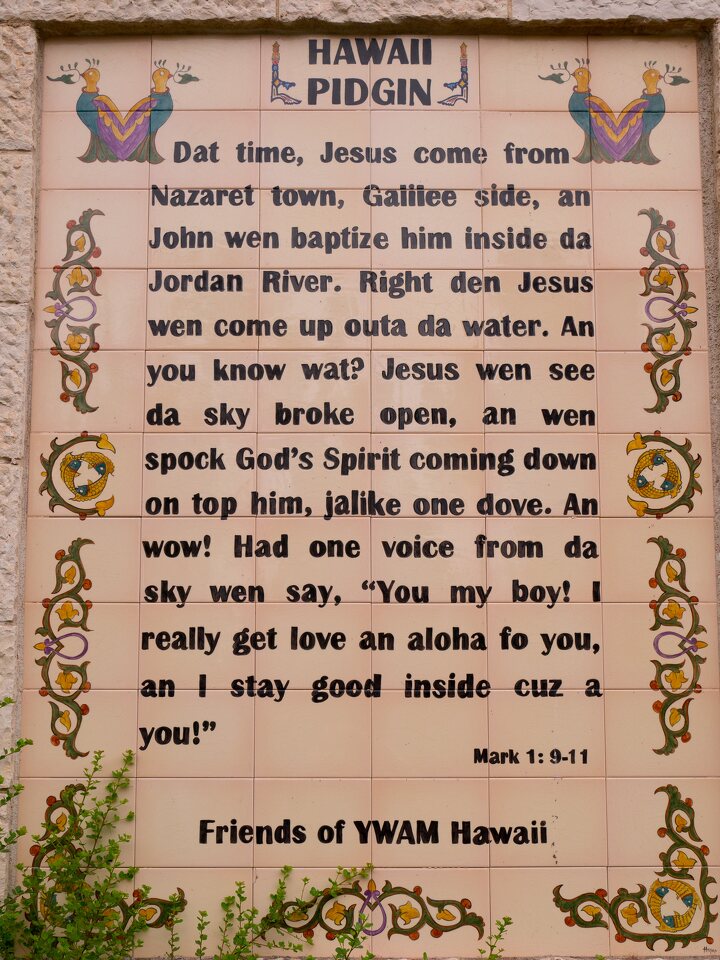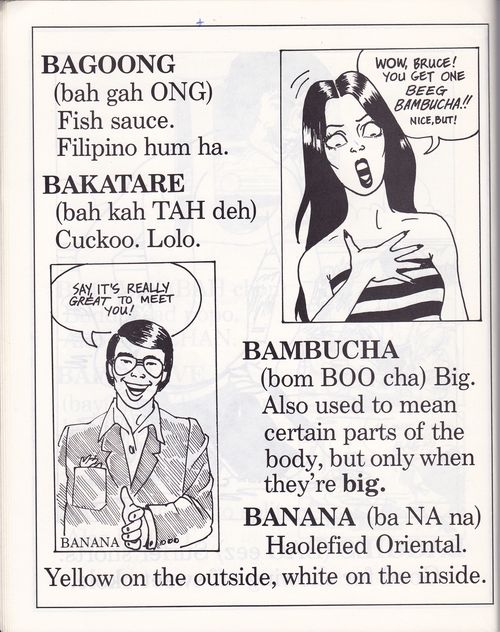

Now I understand pidgin very well, but I rarely speak it. One begged me to stop trying before I made a fool of myself. My own first attempts at speaking pidgin made locals wince. Pidgin is de rigueur among public school students in Hawaii and God help the haole kid who isn't fluent.

To a haole malihini (Mainland newcomer), pidgin sounds like baby talk, but it is a badge of honor to native Hawaiians and other "locals" (Pacific islanders and Asians who grew up in Hawaii.) They feel it sets them apart from mainstream American culture. A different kind of English pidgin is used as the language of business in Oceania and parts of Asia, but the Hawaiian variety serves a social purpose. To date, Hawaiian is the most widely studied Native American language and it is the only Native American language that is used officially by a state government.Below is a brief introduction to pidgin, a slang form of English in Hawaii.

Today, the number of Hawaiian speakers grows steadily in homes and in the schools. In 1990, the federal government of the United States adopted a policy to recognize the right of Hawai‘i to preserve, use, and support its indigenous language. In 1987, government schools began using Hawaiian as the medium of instruction at selected sites. In 1978, Hawaiian was re-established as an official language of the state of Hawai‘i. In recent times, however, much has transpired to rekindle the use of Hawaiian. This hybrid was the result of two language dynamics occurring simultaneously: 1) the attempt suddenly of a public, heretofore accustomed to communicating in Hawaiian, to speak now in English, and 2) the Pidgin Hawaiian that was spoken by immigrants. By the turn of the century, a Hawai‘i Creole language had begun to develop. However, with the subjugation of Hawai‘i under the rule of the United States in 1898, Hawaiian was supplanted and English became the official language for all government offices and transactions. In addition, it was the most widely used language among the general public, which included foreigners and various local ethnic groups. At the same time, it became the language of the Hawaiian government in public offices, the courts, the school system and the legislature. Hawaiian is a Polynesian language spoken on all of the inhabited islands of Hawai‘i with only minor dialectical differences between them.In the nineteenth century, Hawaiian became a written language.


 0 kommentar(er)
0 kommentar(er)
